Small Bedroom Décor Ideas: 7 Expert Tips to Maximize Space and Style
Small bedroom décor can feel challenging because of limited space, but it also offers a chance to create a cozy, personal retreat. Many people want their small rooms to feel stylish and functional without feeling crowded or cluttered.
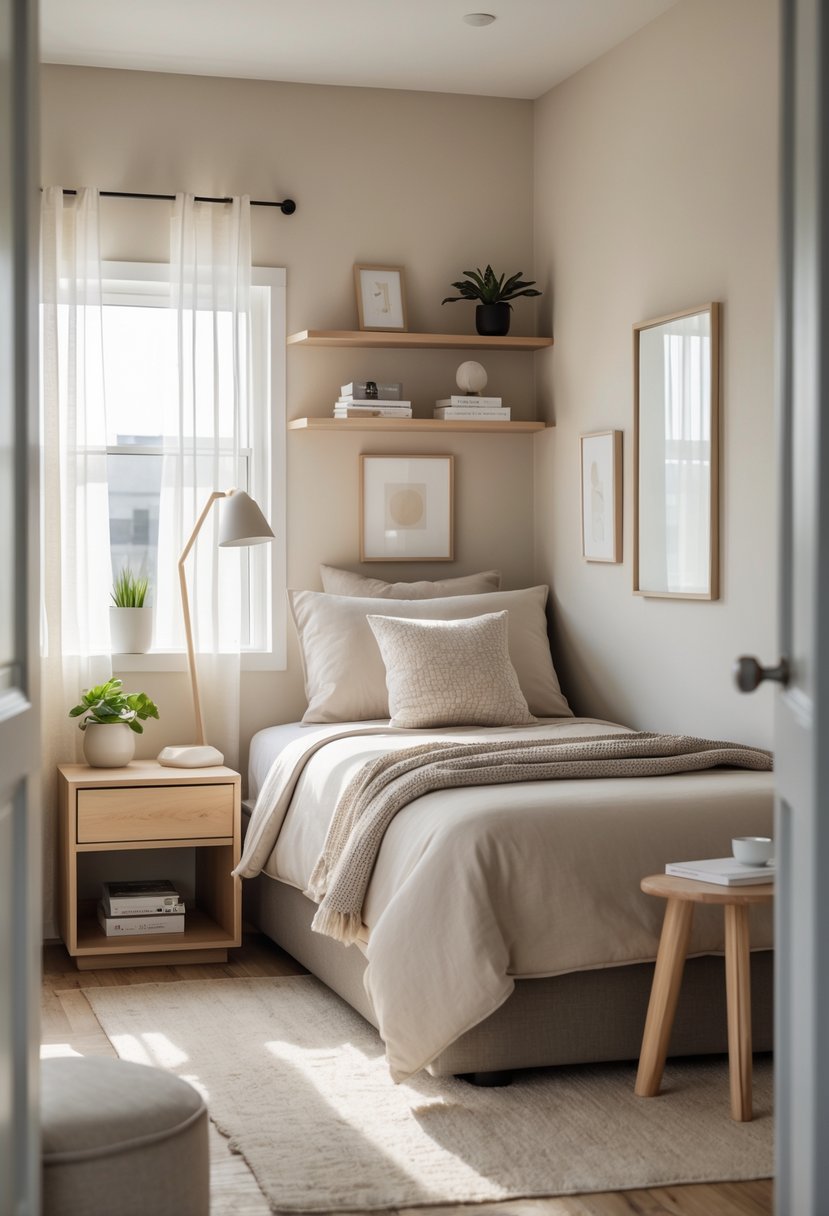
The key to successful small bedroom décor is to use smart design choices that maximize space while reflecting personal style. With the right ideas, even a tiny room can be transformed into a comfortable and inviting place to rest and relax.
1. Use light, neutral paint colors to make the room feel larger
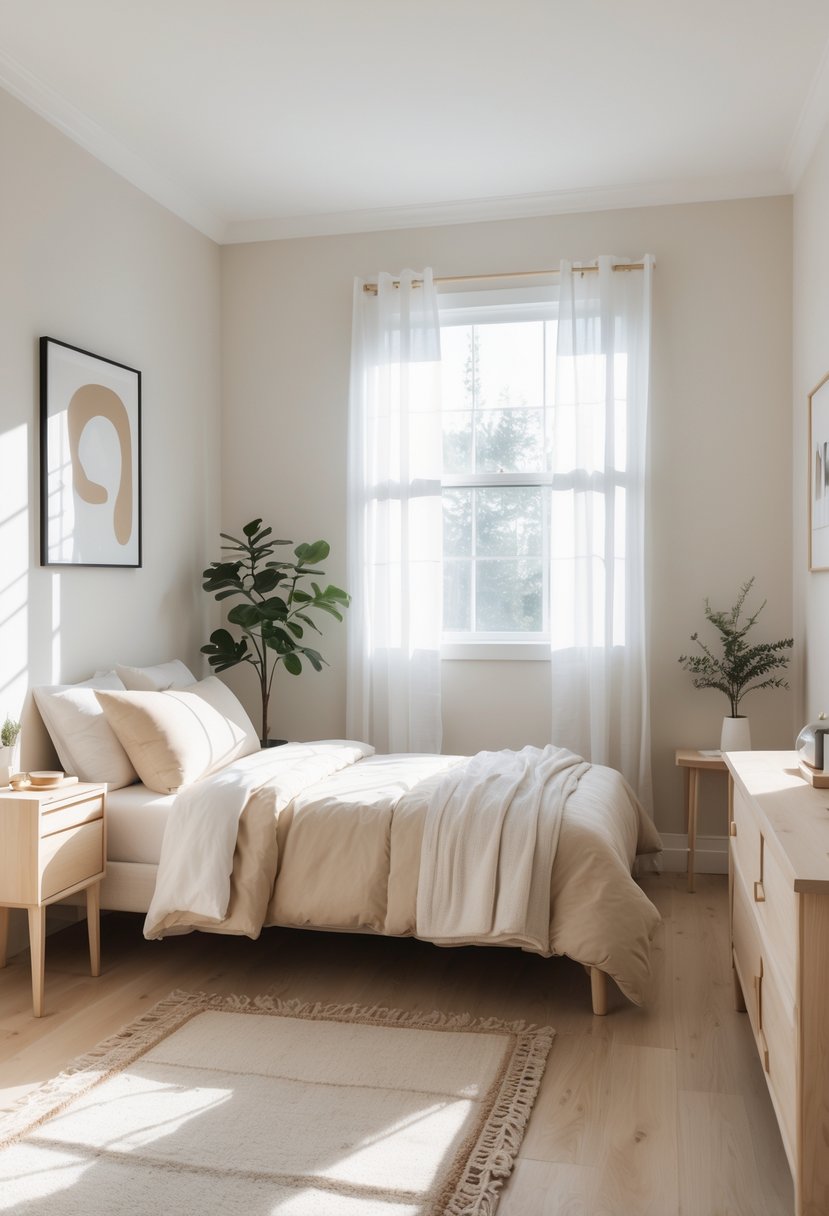
Light, neutral paint colors like whites, creams, and light grays help reflect natural and artificial light. This reflection brightens the room and creates a sense of openness.
These colors visually push the walls back, making the space feel less cramped. They also work well with most decor styles, adding flexibility to a small bedroom’s design.
2. Incorporate multi-functional furniture like storage beds or fold-away desks
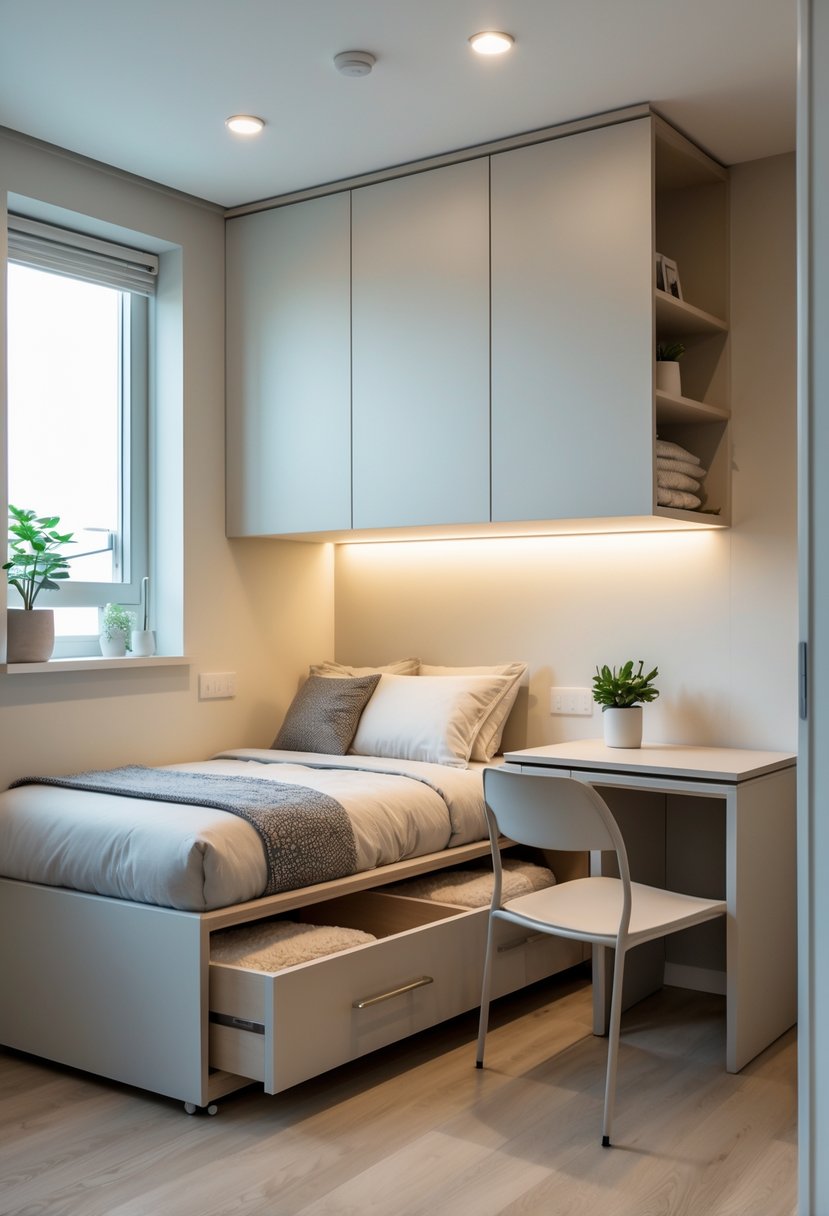
Multi-functional furniture helps save space in small bedrooms. Storage beds offer hidden compartments for clothes or bedding. Fold-away desks provide work areas that disappear when not in use.
These pieces combine several uses into one. This keeps the room tidy and more open. They are practical and suitable for limited spaces.
3. Add wall-mounted shelves to free up floor space for storage.
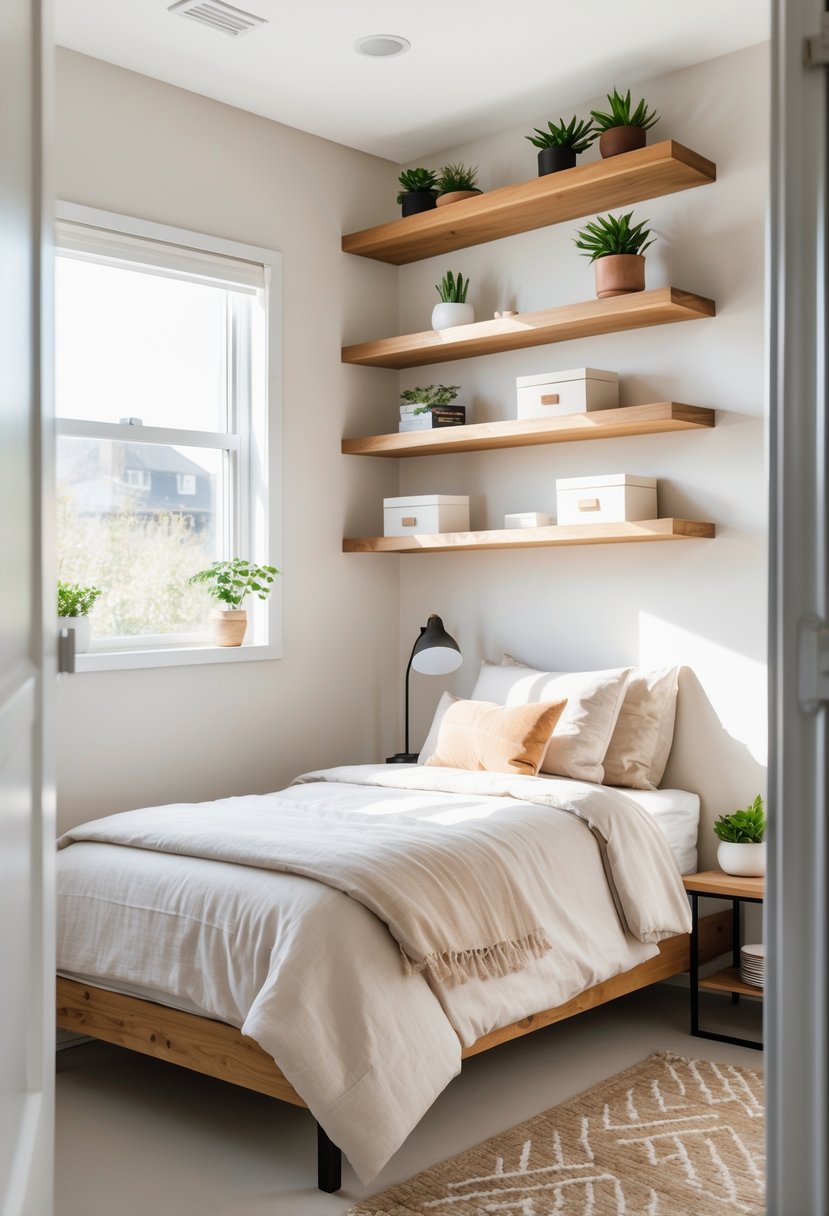
Wall-mounted shelves create extra storage without taking up floor space. They can hold books, decor, or daily essentials, keeping the room tidy.
Shelves installed above desks or beds use vertical space efficiently. This helps avoid clutter and makes small bedrooms feel more open.
Floating shelves with hidden brackets offer a clean, modern look. They are practical and work well in any small bedroom.
4. Use mirrors strategically to reflect light and open up the space
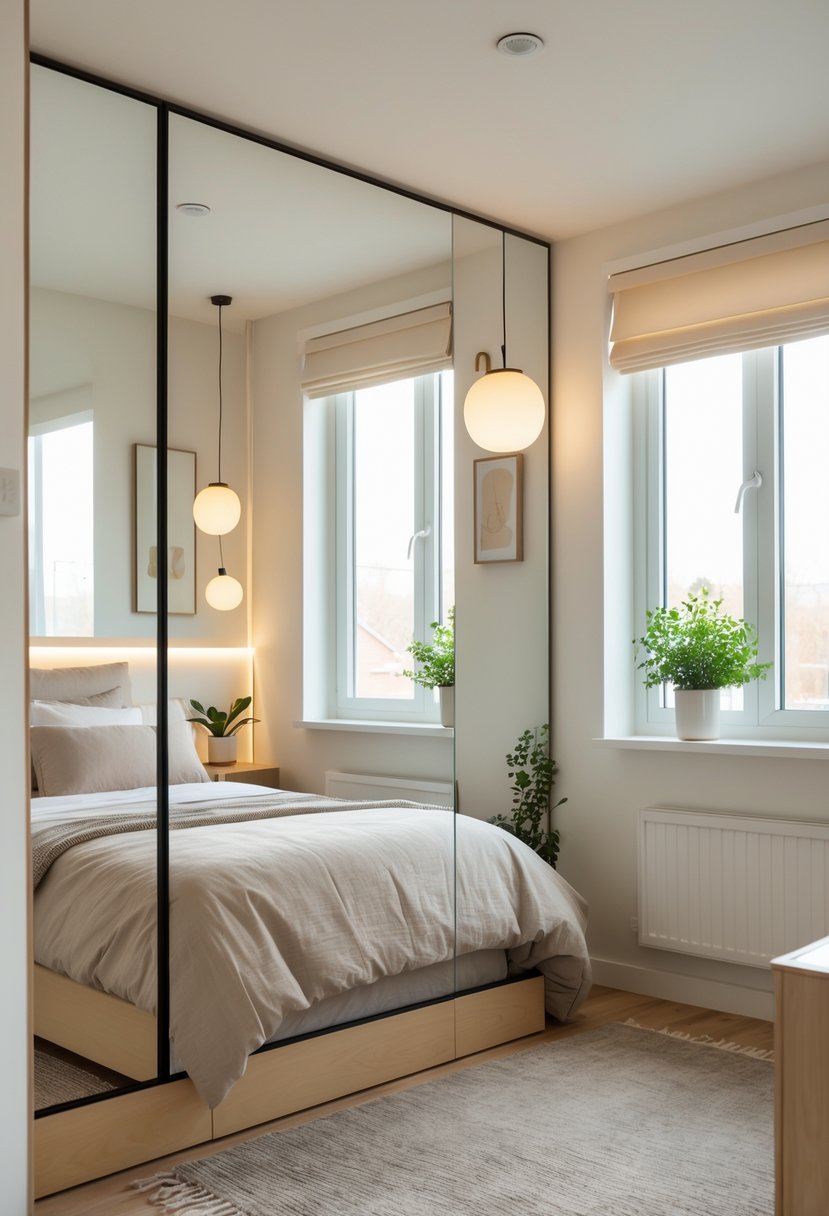
Mirrors help make a small bedroom look larger by reflecting light and space. Placing a large mirror opposite a window bounces natural light around the room. This creates a brighter, more open feel.
Positioning mirrors at eye level can add depth by simulating extra windows. Keeping the area around mirrors tidy ensures they reflect attractive views, not clutter.
5. Choose bedding with minimal patterns to avoid visual clutter
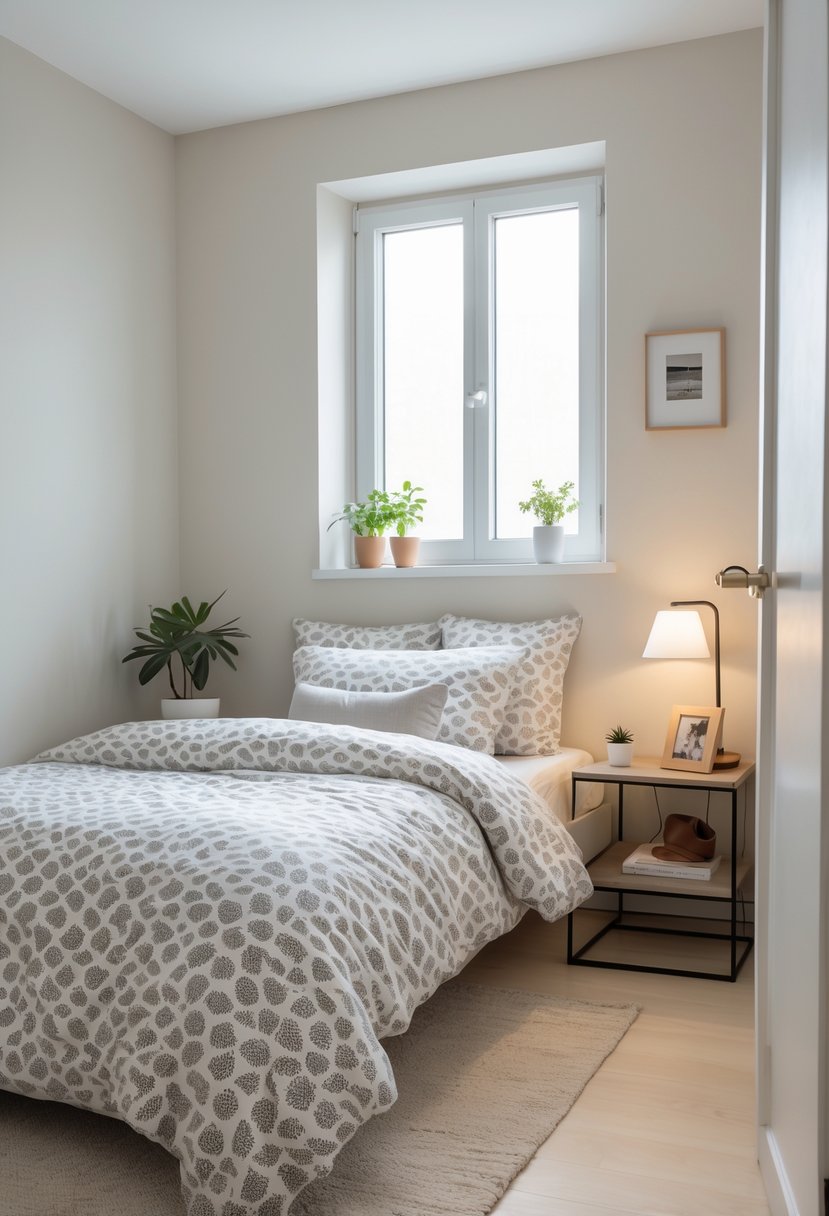
He should select bedding that features simple, minimal patterns or solid colors. This helps keep the room feeling calm and open.
Subtle designs like small dots or thin stripes add interest without overcrowding the space. Avoid bold or busy prints that make a small room look cluttered.
6. Integrate under-bed storage boxes for extra organization
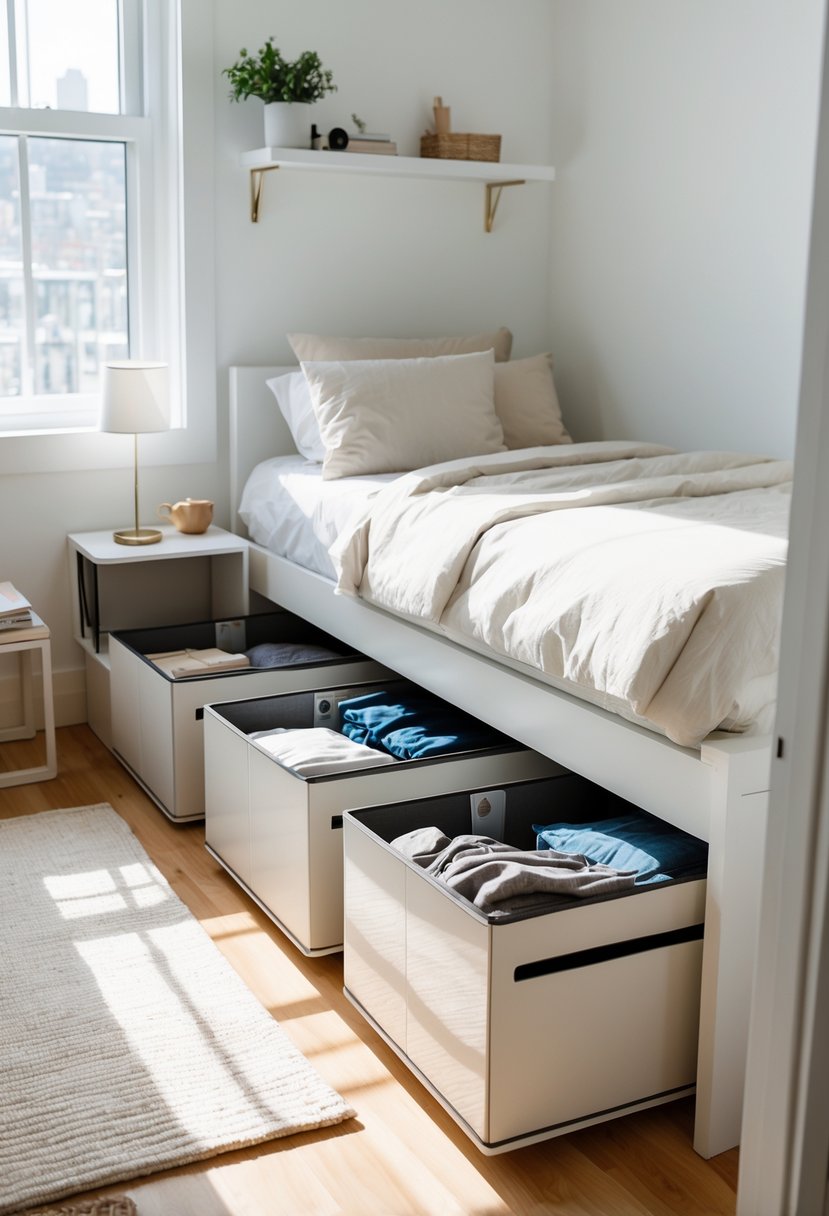
Under-bed storage boxes help use space that often goes unused. They are ideal for storing shoes, clothes, or seasonal items.
These boxes keep belongings out of sight but easy to reach. Choosing clear or labeled boxes improves organization further.
This solution works well in small bedrooms, helping to reduce clutter without adding furniture.
7. Add layered lighting, combining overhead, task, and accent lights.
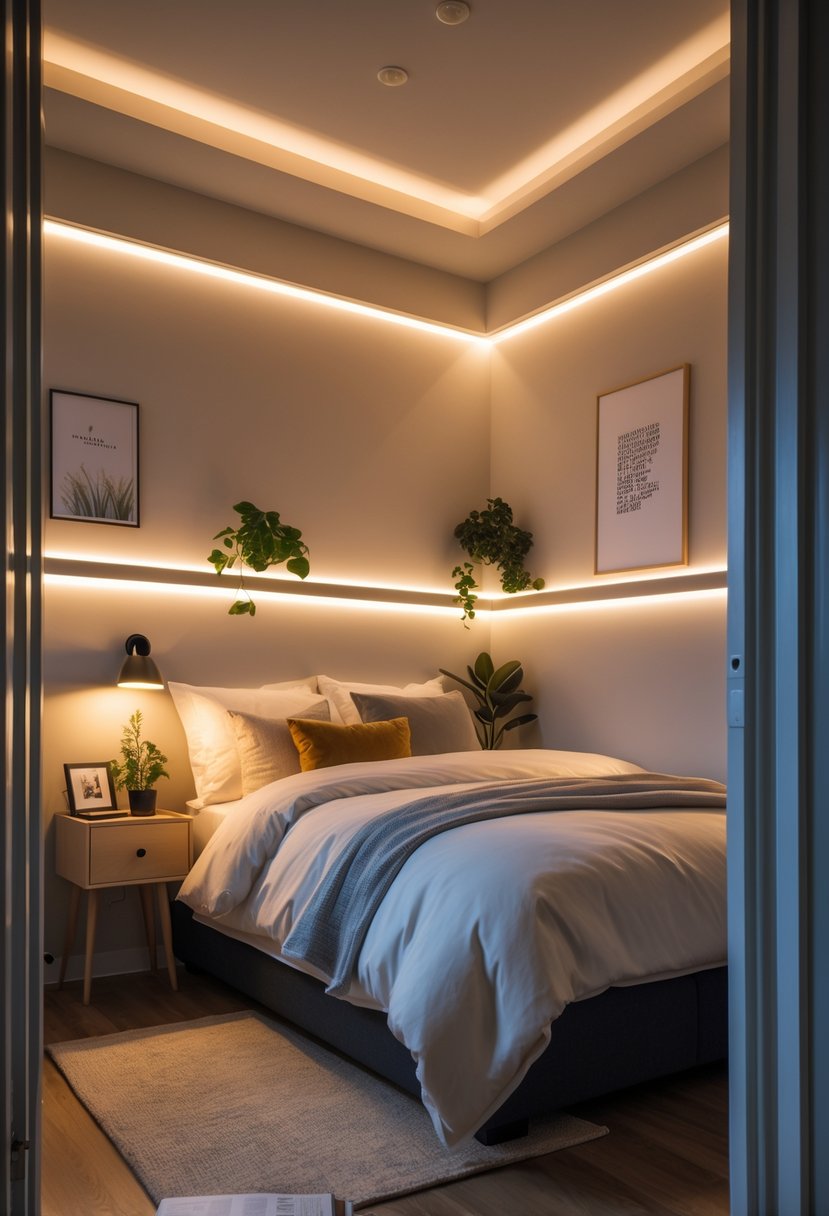
Layered lighting helps make a small bedroom feel brighter and more spacious. Overhead lights provide general brightness. Task lights, like bedside lamps, offer focused lighting for reading or work.
Accent lights add depth by highlighting features or creating a cozy mood. Combining these three types of lighting improves both function and style in a limited space.
Maximizing Storage in Small Bedrooms
Making the most of limited space requires thoughtful choices in furniture and organization. Using items that serve more than one purpose alongside reducing clutter can free up valuable room. These strategies help keep the bedroom neat and functional.
Smart Furniture Solutions
Furniture that combines storage with everyday use is essential in small bedrooms. For example, beds with built-in drawers provide hidden space for clothes or bedding. Desks that double as nightstands offer surface area while holding items inside drawers or shelves.
Ottomans with storage inside are useful for seating and keeping shoes or accessories out of sight. Wall-mounted shelves or open cube bookshelves create vertical storage without taking floor space. Multi-functional pieces ensure every inch is used efficiently without overcrowding the room.
Decluttering Tips for Small Spaces
Removing unnecessary items is vital to maximize bedroom space. Keeping only essentials and regularly sorting through clothes and accessories prevents buildup. Using small containers or trays can organize jewelry and smaller personal items.
Items not used frequently should be stored elsewhere or given away. Keeping surfaces clear and limiting decorations reduces visual clutter, helping the room feel more spacious and calm. Regular maintenance of the space is key to preserving order.
🛏️ FAQ:
How can I make a small bedroom look bigger?
To make a small bedroom feel larger, focus on visual openness. Start by using light or neutral colors for walls, bedding, and curtains to reflect natural light and reduce visual clutter. Install mirrors to reflect light and create an illusion of depth. Avoid bulky furniture; instead, choose low-profile beds and slim furniture to free up floor space. Embrace minimalist styling, keep decorations simple, and don’t overcrowd the room with furniture.
Pro Tip: Mount curtains close to the ceiling and extend them beyond the window frame—this elongates the wall and makes ceilings feel higher.
2. What colors work best in small bedroom décor?
For small bedrooms, light shades like white, off-white, cream, blush, pale blue, or light gray are best. These colors create a fresh, airy atmosphere that enhances spaciousness. However, you can still use dark or bold tones as accents—such as a feature wall, throw pillows, or artwork—to add contrast without overwhelming the space.
Design tip: Soft pastels or earth tones also bring warmth and coziness without shrinking the room visually.
3. How do I decorate a small bedroom on a tight budget?
Start by repurposing or rearranging what you already have. Use DIY wall art, secondhand furniture, or thrift store finds. Removable wallpaper or decals can add personality without a big spend. Install floating shelves for décor and storage, and consider multi-use pieces like a storage ottoman or a bed with drawers underneath.
Budget Idea: Add cozy string lights, a textured rug, and layered bedding to create a warm, stylish look for very little money.
4. What furniture should I use in a small bedroom?
Use space-efficient furniture that doesn’t dominate the room. Look for beds with built-in storage, wall-mounted nightstands, narrow dressers, or a folding desk if you need a workspace. Avoid large armoires or overly deep dressers, and instead, go vertical—tall storage units or wardrobes that maximize wall space are ideal.
Smart furniture choices: Murphy beds, under-bed drawers, modular shelves, and slim-profile desks.
5. Can I use dark colors in a small bedroom?
Yes, but with intention. A dark accent wall or rich-colored bedding can add drama and coziness without making the whole room feel tight. Pair dark hues with light furnishings or metallic accents to maintain balance. Use ample lighting—like wall sconces or pendant lights—to keep the room feeling open even with darker tones.
Style Tip: Deep navy, charcoal, or forest green work beautifully in small rooms when balanced with white trim and mirrors.
6. How do I create extra storage in a small bedroom?
Think vertical and multi-functional. Install floating shelves, over-the-door racks, or even pegboards to hang bags, jewelry, or accessories. Use under-bed storage boxes or opt for a bed frame with drawers. A wall-mounted headboard with storage or bedside caddies can save precious floor space.
Extra trick: Swap a traditional nightstand with a small dresser or rolling cart for added drawer space.
7. How do I make a small bedroom feel cozy and stylish?
Layer textures—soft bedding, throw blankets, cushions, and rugs—to create warmth. Add ambient lighting like fairy lights, candles, or table lamps for a soft glow. Include personal touches like photos, artwork, or a small plant. Avoid overcrowding; instead, choose a few meaningful décor pieces to let your space breathe.
Quick Fix: A canopy, textured curtains, or a soft rug can instantly cozy up a tiny space.
